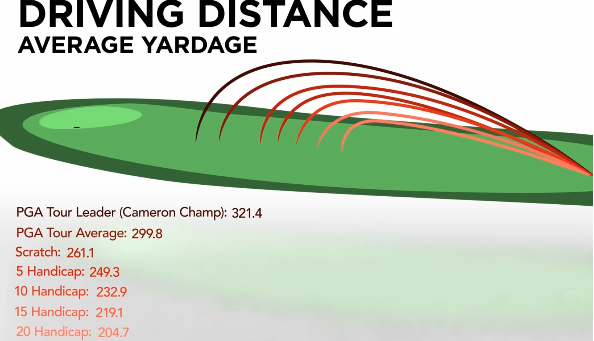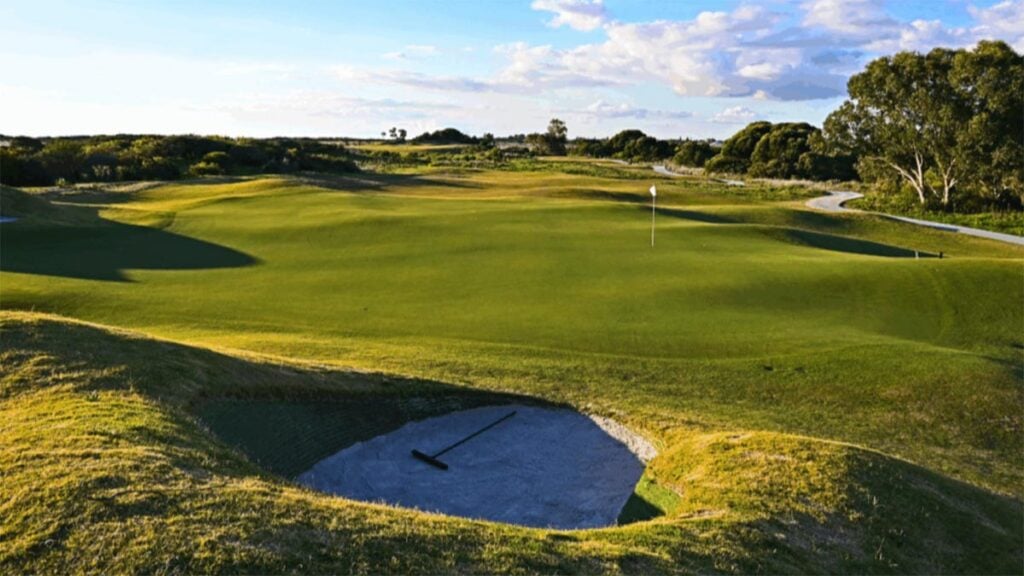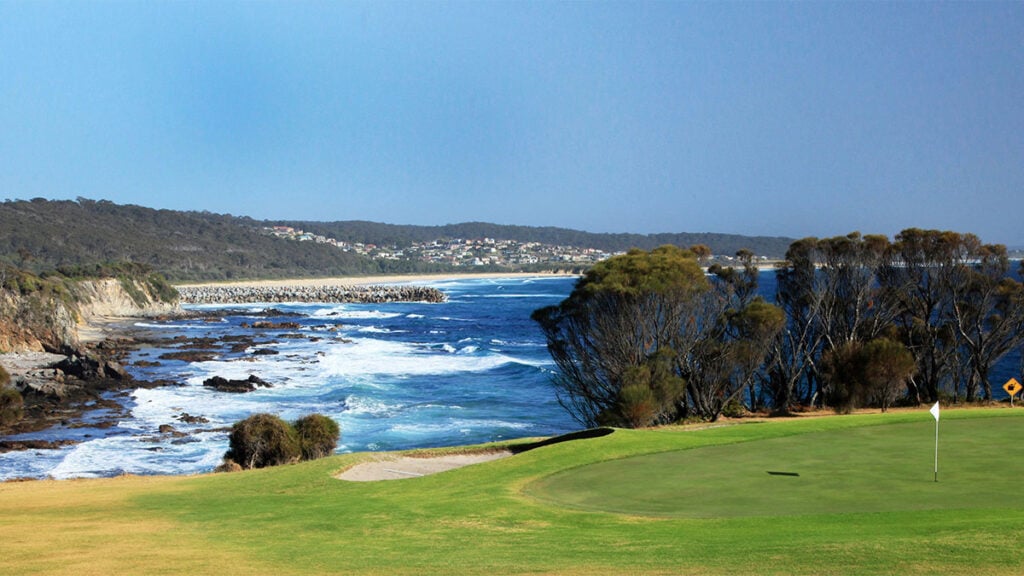[Image: Getty/Golf Digest]
Move the tees forward or roll the ball back?
In January 2024, Golf Digest’s Drew Powell compiled an absolutely brilliant piece about the total distance an average golfer should be playing from to feel like they’re attacking a course relative to their ability using a similar equation Rory McIlroy and other PGA Tour pros.
RELATED: GOLF BALL ROLLBACK EXPLAINED, AND WHY THE USGA PLANS TO PRESS ON
In short, a golfer’s average drive (not what you think you average, but your average drive factoring in flushed shots, mishits etc) should be 4.473 percent of the total distance of the course you’re playing.
In 2023, the PGA Tour’s average course length was just less than 7,300 yards (6,675 metres) and the average driving distance was about 300 yards (274 metres). McIlroy led the tour in driving distance, averaging 326 yards (298 metres) per drive. Most of us will never be able to hit it 330 yards (302 metres), but we can play from an appropriate tee box that would make a course feel as it does for McIlroy. McIlroy’s average was 4.473 percent of the length of an average tour course. So, for us to play a course that feels like a normal tour course does for the reigning Masters champion, our average driving distance should be 4.473 percent of the total distance.
The wild statistic is this: the average driving distance for a 15-handicap golfer is just less than 220 yards (201 metres). That’s roughly the average for all male golfers. For those golfers to navigate a course relative to their ability the way career grand slam winner McIlroy does, they would need to play from around 5,000 yards (4,572 metres). That’s incredible when one remembers USGA data indicates male golfers, on average, play from 6,089 yards (5,569 metres). Plenty play longer tracks.
If your average drive is slightly longer, let’s say 230 yards (210 metres), you should still only be playing a course measuring 5,142 yards (4,701 metres). There’ll be some golfers who won’t like seeing what the data is revealing about average drives, but look at Golf Digest’s second graphic below. The average drive of a scratch golfer is 261 yards (238 metres). So, a scratch golfer who averages 261 yards should still be playing a course measuring only 5,812.6 yards (5,315 metres).


A major contributor to slow play is the total distance golfers are playing from. Somewhere along golf’s participation timeline, our notion of what distance we should be playing from has been significantly lost. Did the macho, championship era of the 1980s and 1990s, when golfers were obsessed with playing courses with the same total distances as tour pros, contribute heavily? Perhaps.
This stuck out to me during COVID-19 when I was introduced by some mates to a golf course south of Sydney called Boomerang GC (not too far from Bulli). It is a fantastic, hinterland-style course with plenty of quirk and charm. I hadn’t really checked the total distance before teeing off, but I was astonished when four of us, walking 18 holes, took about three hours and it was a busy day of green fees. It was fun, had enough challenges for a good player to be stimulated and, yes, several holes that you could get after but there was plenty of trouble lurking. Chipping and putting were pretty tricky with unpredictable lies in the coastal grasses and clever bunkering. The 15th is a 495-metre par 5 that always seems to be into the breeze. When I looked at the scorecard after the round, believing the total distance must have been low to produce a three-hour round, sure enough it was 4,437 metres. It felt like it played longer, but in an enjoyable way.
It begs the question, Are we playing from the wrong tees most of the time? I’d say we are, when pace of play, anecdotally, is glacial at far too many golf courses. Perhaps it’s ingrained in us that “you didn’t shoot a real score unless the course was 6,000 metres or longer.” The average golfer is not consistently (that being the key word) long enough with each club, particularly the driver, to play courses of 6,000-plus metres while maintaining a pace of play that encourages more regular golf.

Pace of play should be a priority for golf in Australia, and globally. There’s an obvious, cost-free solution: educating and urging golfers to play from the correct tees. Playing from shorter tees speeds up play, allows shorter hitters and high handicappers to have less than hybrid and fairway metals into par 4s all day, while forcing better players and longer hitters (they can be two different things) to make a decision on each hole – whether to attack and try to score or play for consistency.
In the context of this week’s US Open kicking up the debate about whether the USGA and R&A’s proposed ball rollback (2028 for pros and 2030 for amateurs) is needed, it’s fair to zoom out and ask, What are the biggest issues weighing down golf in Australia? These days, there are such great, affordable courses (we’ve written about them extensively) in Australia that green fees are not a formidable reason why more people aren’t playing golf, or why people aren’t playing golf more often. I’d argue No.1 is the pace of play. Too many people are eschewing a five or six-hour stint away from their partners and families for recreation that’s a little more time-friendly.
The end goal is to not have to keep building golf courses that are 8,000 yards (7,315 metres) because it’s not sustainable on the environment, on golf course maintenance budgets and more. That is 100 percent true. The path to achieving that has plenty of steps and, while that may necessitate a rollback, the first step should be rolling forward the tees.
It’s low-hanging fruit.




